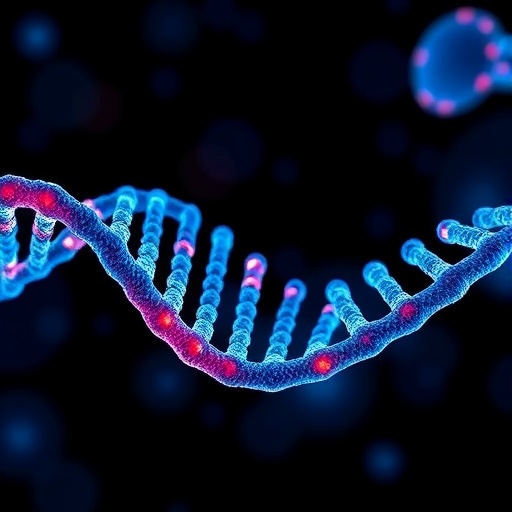Recent groundbreaking research published in Nature unveils the profound influence of tissue stiffness on progesterone receptor (PR) signaling and luminal progenitor cell activity within the breast microenvironment. This study elucidates the molecular interplay between extracellular matrix (ECM) biomechanics and hormonal signaling, revealing a potential therapeutic pathway for breast cancer risk modulation through anti-progestin treatment.
The biomechanical properties of the ECM, particularly its stiffness, have long been associated with cancer progression and epithelial transformation. It has been demonstrated that increased ECM stiffness enhances oncogenic signals, drives cancer stem cell enrichment, and fosters chemoresistance, especially within breast tissue. Building upon these insights, researchers cultured breast organoids derived from high-risk women in collagen-mimetic hydrogels of defined ‘soft’ and ‘stiff’ mechanical properties to dissect the role of matrix stiffness in modulating luminal progenitor fate.
The team observed that stiff matrices (with elastic moduli ranging from 1,800 to 3,000 Pa) significantly upregulated critical PR target genes, such as TNFSF11, alongside luminal progenitor markers SOX9 and KIT. Protein assays confirmed elevated SOX9 and KIT levels under stiff conditions, aligning with increased mammosphere forming efficiency (MFE), a surrogate for progenitor cell activity and stemness. Conversely, these stiffness-induced molecular perturbations were abrogated by anti-progestins like ulipristal acetate (UA) and onapristone, demonstrating the reversibility of biomechanically amplified PR signaling through pharmacological intervention.
Moreover, while onapristone effectively suppressed MFE in stiff hydrogels, it exhibited limited efficacy under soft conditions, highlighting a stiffness-dependent sensitivity to anti-progestin therapy. These results collectively illustrate that anti-progestins can disrupt the feedback loop whereby tissue rigidity amplifies PR-driven progenitor cell proliferation, underscoring a novel mechanobiological dimension in breast cancer prevention strategies.
To further substantiate these findings, collagen alignment — an ECM architectural feature contributing to tissue stiffness — was quantitatively assessed using picrosirius red (PSR) staining. In peri-lobular breast regions from treated patients, collagen fiber coherency dramatically decreased following UA administration. Atomic force microscopy (AFM) confirmed concurrent reductions in tissue stiffness, thereby directly linking molecular and mechanical remodeling in response to anti-progestin therapy.
The clinical relevance of these tissue-level changes was corroborated by longitudinal MRI analyses demonstrating significant reductions in fibroglandular volume (FGV), a radiological correlate of mammographic density (MD), after three months of UA treatment. Given that high MD is an established risk factor for breast cancer, these MRI findings underscore the potential of anti-progestin therapy to mitigate risk via biomechanical and microenvironmental remodeling.
Intriguingly, stratified patient analyses revealed that the anti-proliferative effects of UA, as measured by diminished Ki67 expression, were predominantly observed in individuals with high MD (BI-RADS categories C/D). This pattern extended to molecular markers and progenitor cell frequencies, suggesting that women with stiffer breast tissue microenvironments derive greater therapeutic benefit from PR pathway inhibition. This insight refines patient selection criteria for prevention trials targeting hormone-driven breast cancer pathways.
Complementary transcriptomic profiling further underscored distinct gene expression signatures linked to MD status. High MD specimens exhibited elevated expression of PR-regulated and luminal progenitor-associated genes, including TNFSF11 and CXCL13. These molecular hallmarks correlated positively with volumetric breast density, reinforcing the model wherein ECM stiffness potentiates PR signaling cascades and progenitor cell expansion.
Taken together, the data support a compelling mechanistic framework: PR-expressing luminal progenitor cells engage in paracrine crosstalk with stromal fibroblasts, driving ECM remodeling and increasing tissue stiffness. This biomechanical feedback loop amplifies hormonal signaling and progenitor cell activity, creating a pro-tumorigenic niche. Targeting this axis with anti-progestins disrupts ligand production (e.g., WNT5A), attenuates collagen biosynthesis (e.g., COL6A3), and ultimately decreases both stiffness and progenitor cell populations—a multifaceted approach poised to revolutionize cancer risk reduction.
These findings integrate cutting-edge biomechanical analysis, molecular biology, and clinical imaging to reframe our understanding of breast cancer risk etiology. By elucidating the interplay between ECM stiffness and hormone receptor signaling, this study identifies anti-progestin therapy as a promising intervention to remodel the breast microenvironment, suppress progenitor-driven carcinogenesis, and personalize risk mitigation based on tissue biomechanical properties.
Future directions include delineating the precise signaling intermediates linking PR activity to collagen deposition and exploring the long-term efficacy and safety of anti-progestins in diverse populations stratified by mammographic density. These endeavors will be critical to translating biomechanical modulation into standard breast cancer prevention protocols.
In conclusion, the intricate dialogue between mechanical cues and hormonal pathways in the breast epitomizes the complex tumor microenvironment dynamics. This landmark research paves the way for mechanistically inspired therapeutics that harness tissue biomechanics to thwart cancer initiation, representing a paradigm shift in oncology and preventive medicine.
Subject of Research:
Breast cancer risk modulation through tissue stiffness-induced progesterone receptor signaling and anti-progestin therapy.
Article Title:
Anti-progestin therapy targets hallmarks of breast cancer risk.
Article References:
Simões, B.M., Pedley, R., McCloskey, C.W. et al. Anti-progestin therapy targets hallmarks of breast cancer risk. Nature (2025). https://doi.org/10.1038/s41586-025-09684-7
DOI:
https://doi.org/10.1038/s41586-025-09684-7
Tags: anti-progestin therapyBreast Cancer Riskbreast organoids researchcancer stem cell enrichmentchemoresistance in breast tissuecollagen-mimetic hydrogelsextracellular matrix biomechanicsluminal progenitor cell activitymolecular interplay in breast cancerprogesterone receptor signalingtherapeutic pathways in oncologytissue stiffness and cancer





